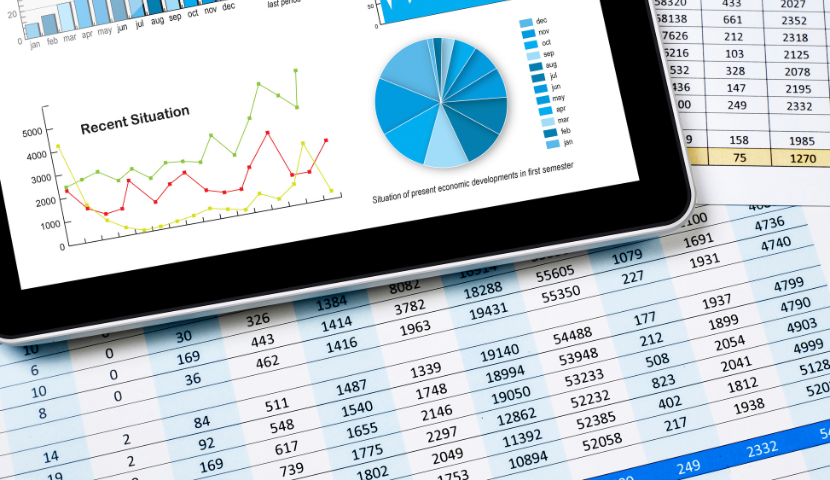3 Reasons Why No One is Reading Your CRM Reports

Kelly Cronin Krein
Data Analyst
A guide to understanding why your reports are missing the mark.
You have a suite of CRM reports that provide critical information for your organization and team to do their jobs. Yet, you see few colleagues using the reports. Maybe you get the sense that your colleagues just send the report to their ‘Junk’ folder or mark as read without opening it. What is going on?
It is not just you. Like CRM implementations, reporting often requires a level of change management to make sure that the right information gets to the right person at the right time. This is especially common with out-of-the-box reporting that may not reflect your organization’s business practices.
So let’s dive into three reasons why people may not be using your reports, and how you can remedy this in the future.
Note that I will be using the word “report” to refer to a suite of data communication tools that can includes SSRS reports, Tableau and Power BI dashboards, Excel workbooks, and other tools. I will not specifically talk about how the report is structured (tables vs. data visualizations), but you can find more information on the benefits of using charts and graphs in your reporting in our previous blog post, Get More from Your Data with Data Visualizations.
You Aren’t Catering to Your Audience
Lack of a clear report audience
Each report should be created for a specific user. This could be a single person, such as the marketing director, or it could be a team, like the leadership giving fundraisers. The specificity of this audience is important so you can serve up the information that is going to be useful to them and not just what numbers you think would be useful. The information that is needed for a gift officer to stay on top of their portfolio of donors is different than the head of the Annual Giving campaign, so the information reported and the method of reporting should be different.
Part of identifying the report audience is considering the data literacy of the users. Some of your power users may desire the ability to export the report to Excel for further analysis*, but others just need to see big number indicators and charts to tell if they are on-track, and won’t need to pull the data into another platform.
You should also consider the terminology used in reports. If the lexicon of your team includes “proposals,” that should be reflected in the report rather than the alternate used by the CRM. Do you call your advancement team “fundraisers” or “gift officers” or “philanthropy officers”? Keeping the language consistent will make the report easier to use and take away the friction of mentally replacing words.
*If your power users are doing analysis outside of the report, you should ask them about it. Is there a specific question that they are trying to answer? Is it something that could be integrated into the report? If your teammate is performing the same tasks repeatedly around this extracted report, it is worth considering automating that process.
The report is not formatted to share with leadership
Many out-of-the-box reports were set up to provide insights to the average CRM user, not the average user at your organization. And some systems are customized to the point that the out-of-the box reports provide misleading or wrong information. Out-of-the-box generalizations can make reports inhospitable for those who just need an executive summary or who may be distracted by the styling.
Custom reports can be styled to match other materials that leadership and the Board receive. This helps establish credibility that the materials are coming from the same source of truth and cuts down on context-switching. A key to this endeavor is a clear set of branding guidelines, which should be established to ensure that reports follow the same style and flow. Branding guidelines include specific colors, logos, text alignment, placement of filters, standardized headers and footers, standard verbiage, and any other design features that ensure consistency. This also contributes to a better user experience, since the user knows where to look for certain information on all materials, such as the date the report was produced or the filters.
Your Colleagues Don’t Know What the Data Means
Lack of clear report objective
What is the purpose of this report? Is it supposed to be a high-level executive summary that provides organization-wide Key Performance Indicators? Or act as a to-do list for a particular staff member of tasks they need to complete this week? Whatever the purpose of the report, make it specific. One report should not be doing the work of your entire CRM, so think about what information the user needs to make them better at their job.
Distrust of the data
In organizations where data entry has been inconsistent, inaccurate, or just different than how things are done now, there may be pervasive mistrust of information contained in a report. That mistrust must be alleviated before you can get widespread adoption of any data-centered initiative, including reporting. There are many tactics for healing this dubiousness, depending on the source of the issue.
Data governance and transparency around who is responsible for each data field is key. Is there still some data cleansing that needs to happen? Start cleaning! Be transparent with the team on the status of the clean-up.
Data entry training can also help make sure that all those entering information are doing so accurately, appropriately, and in a timely manner. “Timely” can be relative based on the size of your team and the time of year. Some organizations establish that all gifts are entered on certain days of the week. Others say that gift officers must have proposals for the week entered by end of day Friday. While some do their performance reporting after the run of the show is complete, not after each performance. And many folks in fundraising know that gift processing at the end of the calendar year is a bit of a moving target. Whatever cadence works best for your team, codify it, and enforce it.
If getting people in the habit of consistent data entry is still a challenge, integrate data integrity checks into the report. Do you have trouble with people not entering their call reports into the proposal notes? Include the notes field in the report and highlight them when they are blank. Is the box office skipping seating orders for upcoming shows? Highlight any unseated orders in your reporting.
Your Reports Aren’t Being Maintained
The report isn’t accessible
Are your reports stored in a place that is difficult to access, like in Tableau Cloud or the farthest corner of your intranet? If you make it cumbersome to access the report, then you will have low usage. Make it as easy as possible for the end user to access the report, while also honoring any security and confidentiality policies.
Consider setting up a system to email the reports directly to the users, send it to them in Slack or Teams, or embed the report in your CRM so they don’t have to go to an extra location to get the information.
The report is outdated
Organizations evolve over time, and the reporting needs will change with them. Reports, like many data tools, should be audited on a regular basis for accuracy. Are they showing the correct values? Am I able to do my job more effectively because of this report?
If the report is broken, ask if time and resources should be invested to fix it or if it should be retired. If its results are important for staying on-track towards your goals, then it is worth updating. If it wasn’t being used much anyways, it may be better to set it aside.
This does not necessarily mean that you are losing the report forever. Store the logic and any materials used in the report development, in case there is reason to adapt this report in the future.
Do Your Reports Need a Tune-up?
Now that you better understand the culprits causing your colleagues to ignore your CRM reports, you can evaluate your existing reports and work to update or, perhaps, start fresh with a new report.
Concise, orderly CRM reports inspire strategic planning and energize campaigns for your organization. JCA can help you hone in on the right metrics, ensuring your CRM can always meet your specific demands.

